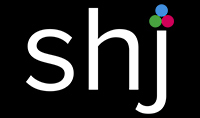Key Elements of a High-Converting Landing Page
A well-crafted landing page is a powerful tool in your marketing arsenal. It's designed with a specific purpose: to convert visitors into leads or customers. To achieve this goal, a landing page must be meticulously designed and optimized. In this article, we'll delve into the essential elements that make up a high-converting landing page and explore how each element contributes to your success.
1. Clear and Compelling Headline:
The headline is the first thing visitors see when they land on your page. It should be concise, attention-grabbing, and aligned with the ad or link that brought them to the page. A clear headline communicates the value proposition of your offering.
2. Engaging Subheadline:
Support your headline with a sub headline that provides additional context and elaborates on the value of your product or service. Use persuasive language to draw visitors in and encourage them to read on.
3. Relevant and Focused Content:
Keep your content concise and focused on the primary message. Explain how your product or service solves a specific problem or fulfills a need. Use bullet points and short paragraphs to make the content easily scannable.
4. Compelling Visuals:
Images and videos can enhance your message and engage visitors. Use high-quality visuals that showcase your product, service, or the benefits of your offer. Visuals should support the content and not distract from it.
5. Call to Action (CTA):
The CTA is the heart of your landing page. It should be prominent, action-oriented, and stand out from the rest of the page. Use clear language that conveys the action you want visitors to take, whether it's "Download Now," "Sign Up," or "Get Started."
6. Trust Indicators:
Build trust with your audience by including trust indicators such as customer testimonials, reviews, awards, or certifications. These elements establish credibility and alleviate any doubts visitors may have.
7. Minimalist Design:
A clutter-free design minimizes distractions and keeps visitors focused on the primary message and CTA. Use whitespace effectively to guide the visitor's attention to key elements.
8. Form or Data Capture:
If your goal is to collect leads, include a form that captures relevant user information. Keep the form fields to a minimum to reduce friction and increase the likelihood of form submissions.
9. Mobile Responsiveness:
A significant portion of internet users access websites on mobile devices. Ensure your landing page is responsive, adapting seamlessly to various screen sizes and orientations.
10. A/B Testing:
Don't settle for the first version of your landing page. Conduct A/B tests by creating variations with slight differences in elements like headlines, visuals, or CTAs. Test these variations to see which version performs better in terms of conversions.
11. Clear Value Proposition:
Visitors should immediately understand the value they'll receive by taking the desired action. Clearly outline the benefits of your offer and what sets it apart from the competition.
12. Exit Strategy:
Even if a visitor doesn't convert, provide an exit strategy that keeps them engaged. This could be a secondary CTA, offering additional resources, or inviting them to follow you on social media.
Conclusion:
A high-converting landing page is a result of careful planning and attention to detail. Each element plays a crucial role in guiding visitors toward the desired action. By crafting a landing page that combines clear messaging, engaging visuals, persuasive CTAs, and trust-building elements, you create a seamless and persuasive user experience that maximizes conversions and drives your marketing objectives forward.

